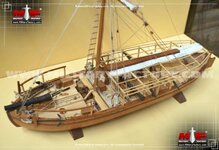Silver Supporter
- Messages
- 6,072
- Reactions
- 15,023
How about this for an assault pistol?I'm not sure Gatling guns would have helped much due to the terrain , nature of the battle or the overwhelming numbers of Sioux , Cheyenne and Arapahoe warriors.
In any event ,Custer did feel that the guns would slow him down.
To play Devil's advocate most of Custer's fights , excluding the attack of Black Kettle's band in '68 were of the "Lets follow sign and hope they stop to rest so we can get 'em" kind of fights.
In his experience Gatling's were of no use in these previous battles.
As stated earlier the campaign of '76 had many faults. Some of which were:
Poor intel.
The Indian agents lied about the number they had on the reservations.
General Terry , the overall commander gave Custer vague orders.
The overall "command and control" of the campaign was weak.
The copper shell casings for the carbines often ruptured causing the case to get stuck in the breech.
A few weeks previous to the LBH battle these same warriors whipped General Crook to a standstill , they were "highly motivated" to say the least.
Not to forget that just 'cause the tactic you used once that worked really well , dosen't mean that it will work again.
But back to the OP's post. At one time we could own an actual military issue gun.
When the English marched to Concord to remove the cannon and powder that belonged to the people of Concord, the militia resisted with military issue or what passed for a "military standard" in the way of firearms.
Andy
antique firearms: 20 shot revolver (http://antiquefirearms.blogspot.com/2009/02/20-shot-revolver.html)















